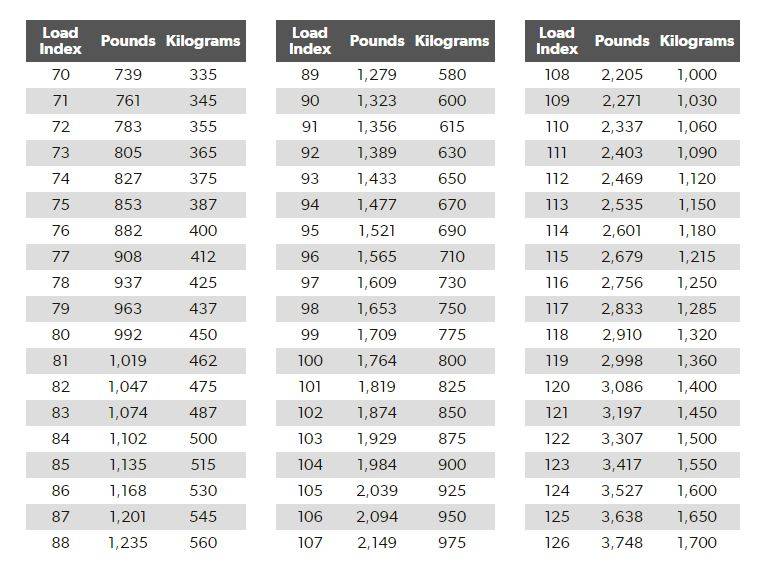What do the numbers on tires mean?
Car owners, new and old alike, are often baffled by the numbers and symbols on the side of their tires. It’s important, however, for drivers to understand what these numbers mean and how to read tire size. Especially if those drivers are responsible for the vehicle’s maintenance.
If you are a student and wondering what these numbers mean, don’t feel alone. Many college students leave home for school without this knowledge under their belts. This can make it difficult for them to make confident choices when it comes to choosing tires for your vehicle. Even many adults struggle to understand what tires will best fit their car or truck.
Understanding Tire Size
When buying tires, it’s important to understand that tires come in many different sizes. The correct tire size determine the tire’s performance and how suitable it is for your driving needs. It is recommended that you check your owner’s manual or ask one of our tire professionals to understand what size of tires are correct for your vehicle. The following information about your tire’s size and type may be found on its sidewall:
Type of Tire
The letter or letters at the beginning (or end) of this sequence will let you know the type of tire. These indicate what type of vehicle the tire is meant for. P, LT, ST, or T. Most tires will have the letter P, which is short for “P-metric” or a passenger car type tire. These are typically installed on passenger cars, light trucks, SUVs, and vans.
An LT appearing at either the beginning or the end of the sequence indicates the tire is a “light truck” tire. This means the tire is designed to be used on vehicles that carry high loads or pull heavy trailers. ST indicates a “special trailer” tire, used on (you guessed it) – trailers, while “T” denotes a “temporary” tire, like a “donut spare” you might find in the trunk of your vehicle.
Tire Width
The first set of digits/numbers in the sequence is the section width of your tire. This is the tire’s width in millimeters across the tread area from sidewall to sidewall.
Aspect Ratio
Next you will find a slash and then another set of numbers: the aspect ratio, sometimes called the tire’s “profile”. This number is a percentage that indicates the tire’s height vs. its width. A lower aspect ratio often means a sportier, more performance – oriented tire.
On the other hand, a higher aspect ratio tends to indicate the tire was designed for other priorities like comfort or rugged durability.
Construction Type
Following the aspect ration, you will find a single letter, either a “D”, a “B”, or an “R” which indicates the construction type for the tire. “R” indicates that the tire is a Radial tire and “D” designates that it is a Diagonal (also known as “Bias”) ply tire and “B” means it is a Belted-Bias ply tire. Today, tires featuring Radial construction are by far the most common because of their superior fuel economy, traction, ride comfort and especially tread life when compared to earlier types of construction.
Rim Diameter
The following number in the set indicates the rim diameter — sometimes also noted as the wheel diameter. This measurement is almost always given in inches. Though there are exceptions, rim diameters ranging from 13” to 22” are most common for passenger vehicles in North America.
Service Description
Since 1991, all tires except the Z rating (discussed below) must have a service rating listed, as well. This is typically the final numbers and letter on your tire. The number indicates the tire’s load capacity. Usually called the tire’s load index, this is the maximum carrying capacity a tire can support.
This number is not the actual weight that a tire can carry, but rather, a number representative of the weight measured in pounds or kilograms. To better understand, here is a graphic:

Speed Rating
Load index and speed rating are found together at the end of the string of numbers and letters on your tire. There are a number of letters that might be on your tire beside the load index that will let you know the maximum speed your tire is rated for.
L rating is used for most boat and utility trailer tires. The speed rating for these is a maximum of 75mph M indicates the tire has been approved for speeds up to 87 mph (140 km/h).
N is approved for speeds up to 81 mph (130 km/h) under optimal conditions. These ratings are usually found on tires meant to be temporary, such a spare tires.
A P means the tire has been approved for speeds up to 93 mph (150 km/h) under optimal conditions. These tires are tested for safety in the perfect conditions, so the rating does not mean this speed is safe in severe weather or terrain unless otherwise indicated.
P tires are uncommon these days. Even tires with specialty function and performance such as winter tires and off-road tires typically achieve at least a Q speed rating.
Q tires are approved for speeds up to 99 mph (160 km/h), again, under optimal conditions. Tires toward the low end of the speed rating range often prioritize a particular function or unique performance over maximum speed rating. Some winter tires, for example, are Q speed rated.
R speed rating allows for speeds up to 106 mph (170 km/h). These tires also usually prioritize a particular function or unique performance over maximum speed capability. R speed tires are rare but sometimes may be found heavy-duty light truck (LT) tires, as well as some winter tires.
An S speed rating means the tire has been approved for speeds up to 112 mph (180 km/h). Everyday passenger vehicle tires can be S speed rated. However, S tires can also prioritize specific performance or function.
A T rating on a tire means that it is approved for speeds up to 118 mph (190 km/h) under optimal conditions. T ratings are most associated with standard touring tires, and everyday passenger vehicles like family sedans and minivans.
An H speed rating on a tire indicates the tire is approved for speeds up to 130 mph (210 km/h) under optimal conditions. An H speed rating is at the low end of the performance tire speed ratings. H speed rated tires are ideal for sport and luxury coupes and sedans that aren’t considered “full-fledged performance vehicles.” H speed ratings are common in the grand touring all-season tire category.
A V rating indicates the tire is approved for speeds up to 149 mph (240 km/h) under optimal conditions.
H and V tires are very comparable. Although V allows for greater speed, that is relatively insignificant in the U.S. where speed limits are strictly enforced.
Y rated tires have been tested at speeds up to, and in excess of, 186 mph (300 km/h) under optimal conditions. These are maximum performance rated tires. Show without a parenthesis around the Y, the tire is rated for a maximum of 186 mph (300 km/h). If the Y appears in parenthesis, the tire is rated for speeds above that.
A Z rating is unique in it’s location, as well as what it indicates. While a Z rating does mean that the tire has been approved for speeds of 149+ mph (240+ km/h), this rating is associated with maximum tire performance and is a match for performance coupes and sedans, sports cars, and supercars.
An exception to the location of speed rating is the Z rating, which pertains to only high-performance tires. You won’t find Z indicated within the service description as usual. Instead, the Z is integrated as part of the tire size information on high-performance tires.
Schedule Your Service with D&R Car Care
As you can see, there is a great deal to know and understand about tire size and performance. It is always best to consult your owner’s manual and a certified technician before replacing or changing your tire size from the factory standard. The experts at D&R Car Care have long been the area’s trusted name in tires. When you need a tire shop in Statesboro, call us. Our tire experts will help you select the very best tires for your vehicle. Or, you can request a tire quote on our website, and then schedule your appointment online!






